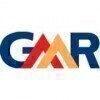Assistant Electrical Engineer
90+ Assistant Electrical Engineer Interview Questions and Answers

Asked in Nagarjuna Construction Company

Q. How would you plan and execute the construction of a 1 KM 11KV Transmission Line?
Planning and executing a 1 KM 11KV transmission line requires careful consideration of various factors.
Conduct a site survey to determine the route and identify any obstacles
Design the transmission line based on the load requirements and voltage drop calculations
Obtain necessary permits and approvals from local authorities
Procure materials and equipment required for construction
Ensure safety measures are in place during construction
Test and commission the transmission line be...read more

Asked in Maxxis Rubber

Q. How do you program in ladder logic for Mitsubishi PLCs to facilitate communication between multiple Mitsubishi PLCs?
To communicate between multiple Mitsubishi PLCs, use the ladder programming language and establish a network connection.
Use the GX Works2 software to program the Mitsubishi PLCs
Configure the network settings on each PLC to establish a network connection
Assign unique IP addresses to each PLC
Use the Ethernet communication protocol to exchange data between PLCs
Implement ladder logic instructions to send and receive data between PLCs
Use communication modules or special function b...read more
Assistant Electrical Engineer Interview Questions and Answers for Freshers

Asked in Clair Engineers

Q. What you know about IMCC panels, what is the main switchgear requirement for 800Amps MCC panel, what will be the fault level for that in the busbars, how PLC and automation works etc...
IMCC panels are used for motor control and automation. 800A MCC panel requires specific switchgear and has a fault level in the busbars.
IMCC panels are used for motor control and automation in industrial settings
800A MCC panel requires specific switchgear such as circuit breakers and fuses
The fault level for 800A MCC panel in the busbars depends on the system voltage and impedance
PLC and automation systems are used to control and monitor the IMCC panels
PLC programming involve...read more

Asked in SHYAM METALICS AND ENERGY

Q. What are Fleming's Left Hand Rule and Right Hand Rule in electromagnetism?
Fleming's Left Hand Rule and Right Hand Rule are used to determine the direction of force, current, or magnetic field in electromagnetism.
Fleming's Left Hand Rule is used to determine the direction of force on a current-carrying conductor in a magnetic field.
Fleming's Right Hand Rule is used to determine the direction of induced current in a conductor moving in a magnetic field.
Both rules are based on the relationship between the magnetic field, current, and force in electrom...read more

Asked in SHYAM METALICS AND ENERGY

Q. What are the common malfunctions and troubleshooting methods for electrical feeders?
Common malfunctions and troubleshooting methods for electrical feeders
Common malfunctions include short circuits, overloads, and open circuits
Troubleshooting methods involve checking for loose connections, using a multimeter to test for continuity, and inspecting for physical damage
In case of a short circuit, isolate the fault by disconnecting sections of the feeder until the fault is located
For overloads, check the load distribution and consider redistributing the load or up...read more

Asked in SHYAM METALICS AND ENERGY

Q. What are the safety devices used in conveyor belts and how are they wired?
Safety devices used in conveyor belts include pull cord switches, belt sway switches, and emergency stop switches.
Pull cord switches are used to stop the conveyor belt in case of emergency by pulling the cord.
Belt sway switches are used to detect any misalignment or deviation of the belt and trigger an alarm or stop the conveyor.
Emergency stop switches are placed at regular intervals along the conveyor belt to quickly stop the operation in case of emergency.
Assistant Electrical Engineer Jobs

Asked in SHYAM METALICS AND ENERGY

Q. What is the minimum megger value required for high tension (HT) and low tension (LT) motors?
The minimum megger value required for high tension (HT) and low tension (LT) motors is typically 500V for HT motors and 250V for LT motors.
Minimum megger value for HT motors is usually 500V
Minimum megger value for LT motors is typically 250V
Megger testing is essential to ensure insulation resistance in motors

Asked in SHYAM METALICS AND ENERGY

Q. What steps should be taken if a transformer trips due to the Buchholz relay acting?
Steps to be taken if a transformer trips due to Buchholz relay acting
Immediately isolate the transformer from the system to prevent further damage
Inspect the transformer and Buchholz relay for any faults or leaks
Reset the Buchholz relay and check for proper functioning
Investigate the cause of the trip such as internal faults or oil contamination
Repair or replace any faulty components before re-energizing the transformer
Share interview questions and help millions of jobseekers 🌟


Asked in Nagarjuna Construction Company

Q. Describe the earthing procedure for a distribution transformer.
Earthing procedure for a distributor transformer involves connecting the transformer to a grounding system.
The transformer should be connected to a grounding system using a grounding electrode.
The grounding electrode should be buried in the earth at a depth of at least 2.5 meters.
The grounding electrode should be made of copper or galvanized iron.
The grounding system should have a resistance of less than 1 ohm.
The earthing procedure should be carried out by a qualified electr...read more

Asked in Nagarjuna Construction Company

Q. Describe the installation process for a 100 KVA DTR.
The installation process for a 100 KVA DTR involves site preparation, foundation construction, equipment placement, wiring, and testing.
Prepare the site by clearing the area and ensuring proper drainage
Construct a foundation that is level and able to support the weight of the DTR
Place the DTR on the foundation and secure it in place
Connect the wiring according to the manufacturer's instructions
Test the DTR to ensure it is functioning properly


Q. What is PPE?How you can build safety work culture in your workplace
PPE stands for Personal Protective Equipment. Building a safety work culture involves training, communication, enforcement, and leading by example.
PPE includes items like helmets, gloves, goggles, and safety shoes to protect workers from hazards.
Conduct regular safety training sessions to educate employees on the importance of using PPE.
Communicate safety protocols clearly and consistently to all employees.
Enforce safety policies and procedures to ensure compliance.
Lead by ex...read more

Asked in SHYAM METALICS AND ENERGY

Q. Does a Megger generate AC or DC, and what is the reason for its output?
A Megger generates DC voltage to test insulation resistance in electrical systems.
A Megger generates DC voltage typically ranging from 250V to 5000V
The reason for using DC voltage is to accurately measure the insulation resistance of electrical systems
DC voltage helps in detecting any insulation faults or breakdowns in the system
The high voltage generated by a Megger helps in identifying potential issues before they cause major problems

Asked in SHYAM METALICS AND ENERGY

Q. How can the Megger value of a found unsatisfactory insulation be improved?
The Megger value of unsatisfactory insulation can be improved by drying out the insulation, repairing any damaged areas, and retesting.
Dry out the insulation using heaters or fans to remove moisture
Repair any damaged areas by replacing or patching up the insulation
Retest the insulation using the Megger to ensure the value has improved
Consider using insulation coatings or sealants to improve the insulation resistance


Q. What is voltage regulation?How desired voltage is maintained at Distribution Level?
Voltage regulation is the process of maintaining a stable voltage level at the distribution level.
Voltage regulation is achieved by using transformers and voltage regulators to adjust the voltage as needed.
Voltage regulators can be either tap-changing transformers or electronic devices that adjust the voltage automatically.
By monitoring the voltage levels and making adjustments as necessary, the desired voltage is maintained at the distribution level.
Voltage regulation is imp...read more

Asked in Sree Metaliks

Q. What type of drives are used in ID fan motors and cooler motors?
Variable frequency drives (VFDs) are used in ID fan motor and cooler motor.
VFDs are used to control the speed of the motor and save energy.
ID fan motor and cooler motor require different speeds at different times, which can be achieved through VFDs.
VFDs can also protect the motor from damage due to overvoltage or undervoltage.
Examples of VFDs include ABB ACS880, Siemens Sinamics G120, and Schneider Electric Altivar Process ATV600.
Asked in Uncease Automation

Q. 1.what is MCB, mccb, rcb, load calculation, motor selection criteria, induction motor 2. Knowledge about field devices
MCB, MCCB, RCB, load calculation, motor selection criteria, induction motor, field devices
MCB stands for Miniature Circuit Breaker, used for protecting electrical circuits from overcurrent
MCCB stands for Molded Case Circuit Breaker, used for higher current ratings and protection
RCB stands for Residual Current Breaker, used for protection against electric shock
Load calculation involves determining the electrical load requirements for a specific system or equipment
Motor selecti...read more

Asked in Reliance Industries

Q. Can you explain the operation and maintenance procedures for transformer feeders and motor feeders?
Operation and maintenance procedures for transformer feeders and motor feeders involve regular inspections, testing, and preventive maintenance to ensure optimal performance and safety.
Regularly inspect transformer and motor feeders for signs of wear, damage, or overheating.
Perform routine testing to check for proper voltage levels, insulation resistance, and overall functionality.
Conduct preventive maintenance such as cleaning, tightening connections, and replacing worn-out ...read more

Asked in Ramoji Film City

Q. How does a transformer breathe, and what materials are used in this system?
Transformers breathe through cooling systems and use materials like oil or air for insulation.
Transformers have cooling systems to dissipate heat generated during operation.
The cooling system can be either oil-based or air-based.
Oil-filled transformers use oil as a cooling and insulating medium.
Air-cooled transformers use fans or radiators to cool the windings.
The cooling system ensures the transformer operates within safe temperature limits.

Asked in Shreem Electrics

Q. What is pf? What is capacitor What is working of capacitor bank
PF is power factor, a measure of how efficiently electrical power is being used. A capacitor is an electrical component that stores energy. A capacitor bank is a group of capacitors connected together to improve power factor.
Power factor (PF) is the ratio of real power to apparent power in an AC circuit.
A capacitor is an electrical component that stores energy in an electric field.
A capacitor bank is a group of capacitors connected together to improve power factor by reducing...read more

Asked in SHYAM METALICS AND ENERGY

Q. What activities are involved in electrical preventive maintenance?
Electrical preventive maintenance activities include inspection, testing, cleaning, and replacement of components to prevent breakdowns.
Regular inspection of electrical systems
Testing of equipment for proper functioning
Cleaning of electrical components to prevent dust buildup
Replacement of worn out or damaged parts
Tightening of connections to prevent loose connections
Checking for overheating issues
Updating software/firmware as needed
Implementing safety measures to prevent acc...read more

Asked in SHYAM METALICS AND ENERGY

Q. What are the maintenance practices for transformers?
Maintenance practices for transformers include regular inspections, testing, cleaning, and oil analysis.
Regularly inspecting for signs of overheating, leaks, or damage
Performing routine testing such as insulation resistance and turns ratio tests
Keeping the transformer and surrounding area clean and free of debris
Conducting oil analysis to monitor the condition of the transformer oil
Ensuring proper ventilation and cooling of the transformer
Checking and tightening connections a...read more

Asked in SHYAM METALICS AND ENERGY

Q. What are the protective measures for a transformer?
Protective measures for a transformer include overcurrent protection, temperature monitoring, and regular maintenance.
Overcurrent protection: Use fuses or circuit breakers to protect against excessive current flow.
Temperature monitoring: Install temperature sensors to prevent overheating.
Regular maintenance: Inspect and test the transformer regularly to ensure proper functioning.
Grounding: Properly ground the transformer to prevent electrical shocks and damage.
Oil level monit...read more

Asked in SHYAM METALICS AND ENERGY

Q. What is the control circuit of a star-delta starter?
The control circuit of a star-delta starter involves two contactors and a timer for smooth transition from star to delta connection.
The control circuit includes a main contactor for connecting the motor in star during starting.
A timer is used to delay the transition from star to delta connection to prevent sudden voltage spikes.
Once the timer elapses, a delta contactor is energized to switch the motor windings from star to delta configuration.
This control circuit ensures a sm...read more

Asked in SHYAM METALICS AND ENERGY

Q. What is the working principle of motors and generators?
Motors convert electrical energy into mechanical energy, while generators convert mechanical energy into electrical energy.
Motors work on the principle of electromagnetic induction, where a current-carrying conductor experiences a force in a magnetic field.
Generators work on the principle of Faraday's law of electromagnetic induction, where a changing magnetic field induces an electromotive force in a conductor.
Motors and generators both involve the interaction between magnet...read more

Asked in Super Smelters

Q. What is transformer and working principles of transformer
A transformer is an electrical device that transfers electrical energy from one circuit to another through electromagnetic induction.
Transformers work on the principle of electromagnetic induction
They have two coils, primary and secondary, wound around a common magnetic core
When an alternating current flows through the primary coil, it creates a magnetic field which induces a voltage in the secondary coil
The voltage in the secondary coil is proportional to the number of turns...read more

Asked in Shree Renuka Sugars

Q. What is the meaning of Power Factor (PF), how can it be controlled, and which methods are used for its control?
Power factor (Pf) is a measure of how effectively electrical power is being used. It can be controlled using various methods.
Power factor (Pf) is the ratio of real power (kW) to apparent power (kVA) in an electrical system.
A low power factor indicates inefficient use of electrical power, leading to increased energy costs and potential equipment damage.
Power factor can be improved by adding power factor correction capacitors to the electrical system.
Other methods to control po...read more

Asked in GMR Group

Q. What are the different types of earthing?
Different types of Earthings include: protective earthing, functional earthing, system earthing, and lightning earthing.
Protective earthing is used to prevent electric shock and ensure safety.
Functional earthing is used to provide a reference potential for electrical equipment.
System earthing is used to stabilize voltage levels and protect against faults.
Lightning earthing is used to protect structures from lightning strikes.
Other types of earthing include signal earthing, in...read more

Q. What size cable is used for a 1-ton AC unit?
The size of cable used for a 1 ton AC depends on various factors such as voltage, current, and distance.
The cable size is determined by the current rating of the AC unit.
For a 1 ton AC, the current rating is typically around 5-7 amps.
The cable size can be calculated using the current carrying capacity of the cable and the voltage drop considerations.
Factors like the distance between the AC unit and the power source also play a role in determining the cable size.
Consulting ele...read more

Asked in Maxxis Rubber

Q. Working of Servo motor, Modes of communication,
A servo motor is a rotary actuator that allows for precise control of angular position.
Servo motors are commonly used in robotics, automation, and control systems.
They consist of a DC motor, a position feedback sensor, and a control circuit.
The control circuit receives a control signal and adjusts the motor's position accordingly.
Servo motors can rotate between 0 and 180 degrees, or even continuously in some cases.
They provide high torque and accurate positioning.
Modes of com...read more

Asked in Gujarat Alkalies & Chemicals

Q. What kind of test to be conducted for transformer oil and what is significant out gases
Transformer oil should be tested for dielectric strength, acidity, water content, and dissolved gas analysis. Significant out gases include methane, ethylene, and acetylene.
Dielectric strength test measures the ability of the oil to withstand electric stress without breaking down.
Acidity test determines the level of acidic compounds present in the oil, which can degrade insulation.
Water content test checks for moisture that can reduce the dielectric strength of the oil.
Dissol...read more
Interview Questions of Similar Designations
Interview Experiences of Popular Companies
Calculate your in-hand salary
Confused about how your in-hand salary is calculated? Enter your annual salary (CTC) and get your in-hand salary

Reviews
Interviews
Salaries
Users